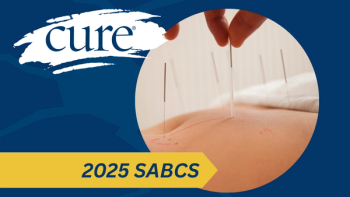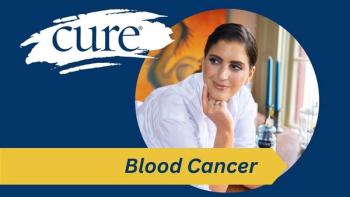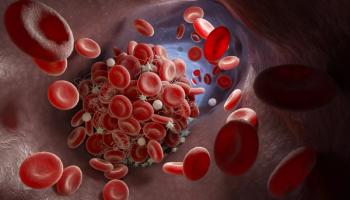
Access to Therapies Through Clinical Trials ‘a Blessing’ for Lymphoma, Other Cancers
One patient was able to access a therapy for follicular lymphoma before it was approved by the FDA, which allowed him to help future patients through his experience.
After undergoing rounds of chemotherapy for follicular lymphoma, a common form of non-Hodgkin lymphoma, Juan Yee considered stopping treatment based on his experience with side effects, but the arrival of his grandson — and the opportunity to participate in a clinical trial — gave him a new lease on life.
In 2018, Yee participated in a clinical trial where he was treated with Lunsumio (mosunetuzumab-axgb), a CD20xCD3 T-cell engaging bispecific antibody and a new class of fixed-duration cancer immunotherapy. Since then, the
Yee, who works for the United States Postal Service and is married with three sons, is grateful for the chance to participate in the clinical trial in addition to his now-three-year-old grandson, who was the main driver of him starting treatment again.
“I was done (with treatment),” he said. “I didn’t want to do anything anymore until I found out that my son’s girlfriend was pregnant. I knew I had to try because I want to meet my grandkids, so he was a miracle for me.”
In addition to being open to people about his cancer treatment experience, he also urged patients to speak with their oncologists about clinical trials.
“If I could do anything to help others, I will do it,” Yee said. “I’m used to telling everybody my story and I will talk to people. And now that I did (the clinical trial at) City of Hope, … when (people) come to me with breast cancer or prostate (cancer), I always tell them to talk to their oncologist. There's probably something out there. There's a clinical trial.”
Diagnosis and Early Treatment
Yee was experiencing symptoms including fatigue, decreased appetite, night sweats and swollen lymph nodes, which he originally attributed to several factors like working long hours and issues with his tonsils when he was younger. Although he put off seeing a doctor, he went to go see a family friend of his, who is a doctor in Tijuana, when he woke up one morning and his testicles were “the size of a watermelon,” he said.
After he performed some tests, within a couple days, his doctor said it may be cancer — non-Hodgkin lymphoma — and to see a doctor.
Yee made an appointment with his doctor through Kaiser Permanente, who reviewed the paperwork from the doctor he saw in Tijuana. He confirmed the likelihood of cancer but urged Yee to see an oncologist. He was eventually diagnosed in March 2012 with stage 4 follicular lymphoma.
“Once he said it was cancer, I remember crying, my tears were just coming and I don’t remember anything else,” Yee said. “I just remember the doctor saying, ‘We need to start chemo right away. Pop over tomorrow.’”
He underwent eight rounds of chemotherapy and experienced some side effects along the way like fatigue, fever and loss of appetite. Yee also received Benadryl alongside chemotherapy to address a reaction he had during his first round. He said, “I started jumping in the bed like a fish out of water. My body was reacting to chemo.”
Yee continued working with the United States Postal Service, which is where he works to this day. Back in 2012, he only worked there for six years and was worried about potential time he could miss from work due to side effects.
“I was a supervisor, I wasn’t a (mail) carrier anymore, so I stayed inside the office, answered phone calls,” he said. “My boss and my coworkers were pretty good. They really took care of me. But it was tough. …I would just go to work (after chemo) because I didn’t want to miss (work). My boys were still young back then. … My wife wasn’t working, so I was the sole provider.”
Yee also found it difficult to accept help at home from his family.
“Your whole family is suffering because my wife, my wife’s family, my in-laws, my family, they all wanted to be here,” he said. “They all wanted to support, they all wanted to help. So to me, that was hard. My brother that came up to me and said, ‘You’re always helping, you’re always there for us. Now we want to do it for you.’ But I wasn’t used to that.”
Cancer Recurrence
After undergoing eight rounds of chemotherapy, Yee started maintenance therapy with Rituxan (rituximab) until 2016, when the cancer returned. His oncologist recommended six rounds of chemotherapy and a bone marrow transplant, for which he was referred to a specialist. Yee learned what is involved before, during and after a bone marrow transplant and decided that it was too hard for him to go through. The specialist agreed with this decision, especially since he was still young, so he proceeded with six rounds of chemotherapy followed by maintenance therapy with Rituxan again.
“By that time, I was tired of the Rituxan. I was tired of doing it,” Yee said. “I was always afraid of needles and cancer put me through all this.”
In 2018, Yee noticed his lymph nodes were swollen again and he felt weak, so he made an appointment with his oncologist, although he didn’t tell his family about it this time. Stage 4 follicular lymphoma returned again.
Upon hearing that he would have to start chemotherapy again — or even a bone marrow transplant — he decided that he no longer wanted to proceed with treatment.
“I don’t want to do anything. I’m tired,” Yee said. “Not only I’m putting myself through all of it, I’m putting my whole family through it. … I said, ‘How long would I live?’ And he said, ‘Well, it’s still early. I don’t know, a year or so. I can’t tell you that.’ I’m not doing anything anymore. That’s it. I’m done.”
Deciding to Try a Clinical Trial
A month after hearing the news from his oncologist, which he kept to himself, he found out some other news: his daughter-in-law was pregnant with Yee’s first grandchild. This was a turning point for him and what motivated him to start treatment.
Yee told his family about his recurrence, and then went to his oncologist with his wife to discuss treatment options. His oncologist referred him to a clinical trial assessing Lunsumio that was being conducted at City of Hope. He met with a doctor there, who explained to Yee and his wife how the drug works, what the clinical trial entails and what he can expect with treatment. Both Yee and his wife felt positive about what they’ve learned, so they decided to proceed with the trial.
Yee also understood how his participation in this clinical trial could allow him to impact treatment for future patients with follicular lymphoma.
“When they offered me the clinical trial, that's one of the things that came to my mind,” he said. “I said I hope it would work and if it works, I want other people to try it, other people to benefit from it.”
About a month later, after he underwent some lab work, he started treatment. Despite the reassurance he received from the doctor at City of Hope, Yee was still worried that he would experience the same side effects on Lunsumio as he did with chemotherapy.
“I was surprised. The next day, I was OK, a little bit tired,” Yee said. “I would blame it more on the Benadryl they were giving me before the treatment than anything else. I didn’t lose the hair. I didn’t lose my appetite. I didn’t lose nothing. I just felt fine. … I was 100%. I had a normal life.”
Since the drug has been approved late last year, Yee hoped that other patients with follicular lymphoma can have the opportunity to be treated with this therapy.
“It worked,” he said. “So not only did it benefit myself — I mean, I'm fine. I didn't have to go through chemo, and now it got approved. I want other people to try it … and be able to not have to go through chemo and all the hard stuff when you have chemo.”
Currently, Yee still sees the teams at Kaiser Permanente and City of Hope for regular check-ups, but he has a clean bill of health. He considers himself lucky to be given the opportunities he has been given through his cancer journey.
“I don’t know if God is watching over me, but I was able to get this treatment. It was a blessing,” he said.
For more news on cancer updates, research and education, don’t forget to





